UAE Residents Alerted to Dynamic Weather Shifts and Sunnier Days Ahead.
As the United Arab Emirates (UAE) transitions from spring to summer, a notable shift in temperatures is underway, promising warmer days ahead. This period ushers in swift fluctuations in atmospheric pressure, typical of the early stages of spring. Meteorological experts caution residents to anticipate sudden changes in weather conditions and to make necessary preparations.
Dr. Ahmed Habib, a climate expert from the National Centre of Meteorology (NCM), sheds light on this phenomenon. He explains, “During this month, the influence of the Siberian high-pressure system weakens. Instead, the region experiences the passage of extensions of low-pressure systems at both upper and surface levels, moving from west to east.” These conditions may involve extensions such as troughs from the east. If these depressions intensify, they could lead to heightened cloud cover in specific regions, potentially increasing the likelihood of rainfall.
As the transition progresses, the sun’s position gradually ascends throughout the afternoon in the UAE and the broader Northern Hemisphere, reaching its zenith near June 21 during the summer solstice. “Summer is anticipated to start approximately on June 22 or 23, leading to a gradual rise in temperature over the subsequent days and weeks,” Habib adds.
The summer solstice marks the onset of astronomical summer and marks the year’s longest day. This event occurs when either of Earth’s poles is tilted most directly toward the sun, happening twice annually due to Earth’s axial tilt. In June, the Northern Hemisphere observes the summer solstice, while the Southern Hemisphere experiences the winter solstice. Conversely, in December, the Southern Hemisphere celebrates the summer solstice, while the Northern Hemisphere experiences the winter solstice.
“The observable progression of the sun’s movement continues its northward path towards the Cancer orbit, resulting in a gradual increase in daylight hours in the northern hemisphere. Concurrently, air temperatures also rise gradually across most regions of the country, with mean temperatures increasing by three to five degrees compared to March,” Habib elaborates.
Humidity tends to decrease slightly during April compared to March, especially in the latter half of the month. Additionally, there are chances of fog and mist formation during the first half of April over scattered parts of the country, although this frequency is expected to decrease in the second half.
Reflecting on previous observations about UAE, Habib notes, “Last year, I observed that the recorded temperature was not as high as in previous years. However, the humidity levels were notably high throughout the year, persisting for an extended period. Consequently, despite the sensation of increased temperatures, the actual recorded temperatures were not exceptionally high.”
Looking ahead, humidity is expected to persist in certain inland and coastal regions, particularly in the Northern areas, accompanied by a chance of partly cloudy to fair weather during the upcoming weekend and the following days in UAE. Meteorological efforts to influence weather patterns continue unabated, with cloud seeding operations being initiated whenever favorable cloud formations are observed. These operations are conducted around the clock, with aircraft and pilots standing by for this purpose.
In addition to the meteorological insights provided by experts like Dr. Habib, understanding the implications of these weather patterns is crucial for residents and policymakers alike. The UAE’s unique climate presents both opportunities and challenges, shaping various aspects of life from agriculture and tourism to infrastructure development and energy consumption.
With rising temperatures in UAE, there’s an increased demand for energy to power air conditioning systems, highlighting the importance of sustainable energy solutions. Investing in renewable energy sources like solar power not only reduces reliance on fossil fuels but also contributes to mitigating climate change. Moreover, initiatives promoting energy efficiency in buildings and transportation can help alleviate the strain on energy resources during peak summer months.
Stay Connected: ”Your Source for the Latest News Updates“





